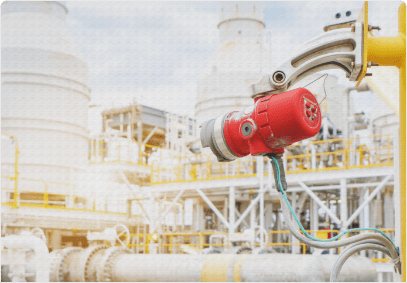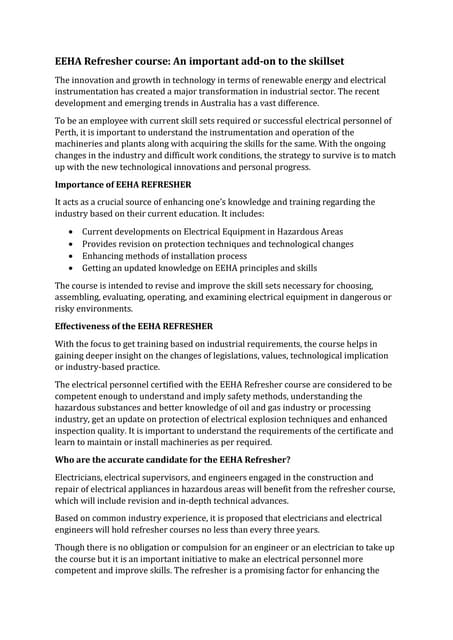The Ultimate Guide To Roar Solutions
In such an environment a fire or explosion is feasible when 3 standard conditions are met. This is frequently described as the "hazardous location" or "burning" triangle. In order to protect installments from a prospective surge a technique of analysing and identifying a potentially hazardous location is called for. The purpose of this is to make sure the appropriate choice and setup of tools to ultimately protect against an explosion and to guarantee safety of life.

No tools should be installed where the surface area temperature of the devices is above the ignition temperature of the given danger. Below are some typical dirt harmful and their minimal ignition temperature level. Coal Dust 380C 225C Polythene 420C (thaws) Methyl Cellulose 420C 320C Starch 460C 435C Flour 490C 340C Sugar 490C 460C Grain Dust 510C 300C Phenolic Resin 530C > 450C Aluminium 590C > 450C PVC 700C > 450C Soot 810C 570C The possibility of the risk existing in a concentration high enough to create an ignition will certainly differ from location to location.
In order to categorize this risk an installation is split into locations of threat relying on the quantity of time the hazardous is present. These locations are described as Areas. For gases and vapours and dusts and fibres there are 3 areas. Area 0 Area 20 A harmful atmosphere is extremely most likely to be present and may exist for extended periods of time (> 1000 hours per year) or perhaps continually Zone 1 Area 21 A harmful environment is possible however unlikely to be present for lengthy periods of time (> 10 450 C [842 F] A category of T6 implies the minimal ignition temperature level is > 85 C [185 F] Harmful area electric tools possibly made for usage in higher ambient temperature levels. This would showed on the rating plate e.g. EExe II C T3 Ta + 60C( This indicates at 60C ambient T3 will not be surpassed) T1 T1, T2, T3, T4, T5, T6 T2 T2, T3, T4, T5, T6 T3 T3, T4, T5, T6 T4 T4, T5, T6 T5 T5, T6 T6 T6 A T Class score of T1 implies the optimum surface temperature created by the instrument at 40 C is 450 C. Thinking the linked T Course and Temperature level score for the tools are ideal for the location, you can always make use of a tool with a much more rigid Division ranking than required for the area. There isn't a clear solution to this concern sadly. It actually does rely on the kind of equipment and what fixings need to be lugged out. Tools with certain examination treatments that can't be carried out in the field in order to achieve/maintain 3rd party score. Should return to the manufacturing facility if it is prior to the tools's service. Field Fixing By Authorised Personnel: Complex screening might not be required nonetheless particular procedures might require to be followed in order for the tools to keep its third party rating. Authorised employees have to be utilized to execute the job properly Repair have to be a like for like substitute. New element need to be taken into consideration as a direct substitute needing no unique testing of the equipment after the repair work is total. Each item of devices with a hazardous score need to be examined independently. These are outlined at a high degree below, however for more comprehensive info, please refer straight to the standards.
Things about Roar Solutions
The equipment register is an extensive database of tools records that consists of a minimum set of fields to recognize each item's place, technical parameters, Ex-spouse category, age, and ecological data. This details is essential for tracking and handling the devices effectively within harmful areas. In contrast, for regular or RBI sampling examinations, the quality will certainly be a mix of Thorough and Close evaluations. The proportion of Thorough to Close evaluations will be figured out by the Devices Threat, which is examined based on ignition risk (the likelihood of a resource of ignition versus the chance of a combustible ambience )and the hazardous area classification
( Area 0, 1, or 2). This variation will certainly also affect the resourcing needs for job prep work. Once Great deals are specified, you can create sampling plans based on the example size of each Whole lot, which refers to the number of arbitrary equipment items to be checked. To determine the called for example dimension, two facets require to be reviewed: the dimension of the Great deal and the group of examination, which suggests the level of initiative that should be used( lowered, typical, or boosted )to the inspection of the Great deal. By combining the group of inspection with the Whole lot dimension, you can after that establish the proper denial standards for an example, implying the permitted number of damaged products located within that sample. For more information on this process, please refer to the Power Institute Guidelines. The IEC 60079 conventional recommends that the optimum interval in between assessments should not exceed 3 years. EEHA examinations will certainly also be carried out outside of RBI campaigns as part of scheduled upkeep and devices overhauls or repairs. These assessments can be credited toward the RBI sample sizes within the influenced Great deals. EEHA evaluations are carried out to identify mistakes in electrical equipment. A weighted scoring system is necessary, as a solitary tool might have numerous mistakes, each with differing levels of ignition risk. If the mixed rating of both assessments is much less than two times the fault score, the Great deal is considered acceptable. If the Lot is still thought about inappropriate, it needs to go through a full assessment or reason, which might set off stricter assessment methods. Accepted Great deal: The causes of any kind of faults are determined. If a typical failing mode is found, extra equipment might call for evaluation and repair. Faults are classified by severity( Security, Integrity, Housekeeping ), ensuring that urgent problems are evaluated and addressed without delay to minimize any impact on security or procedures. The EEHA database ought to track and tape the lifecycle of faults in addition to the restorative activities taken. Implementing a durable Risk-Based Inspection( RBI )method is important for making sure conformity and safety in taking care of Electric Devices in Hazardous Areas( EEHA) (eeha). Automated Mistake Scoring and Lifecycle Management: Easily take care of mistakes and track their lifecycle to improve evaluation precision. The introduction of this assistance for risk-based examination additionally reinforces Inspectivity's position as a best-in-class service for regulative compliance, in addition to for any asset-centric assessment usage instance. If you have an interest in learning a lot more, we invite you to ask for a presentation and discover exactly how our option can change your EEHA management procedures.
8 Simple Techniques For Roar Solutions

In regards to eruptive risk, a dangerous area is a setting in which an eruptive atmosphere is present (or may be anticipated to be present) in quantities that call for special preventative measures for the construction, installment and usage of tools. electrical refresher course. In this write-up we discover the difficulties encountered in the office, the risk control procedures, and the required expertises to work safely
These materials can, in particular problems, develop eruptive environments and these can have significant and awful consequences. Most of us are familiar with the fire triangle eliminate any one of the 3 elements and Full Article the fire can not occur, however what does this mean in the context of harmful locations?
In most circumstances, we can do little concerning the degrees of oxygen airborne, however we can have significant influence on resources of ignition, for instance electrical devices. Harmful locations are recorded on the hazardous location category illustration and are determined on-site by the triangular "EX" indicator. Here, among various other crucial information, areas are split right into three types depending upon the risk, the chance and period that an eruptive environment will certainly exist; Zone 0 or 20 is regarded the most unsafe and Zone 2 or 22 is deemed the least.
Comments on “The 5-Second Trick For Roar Solutions”